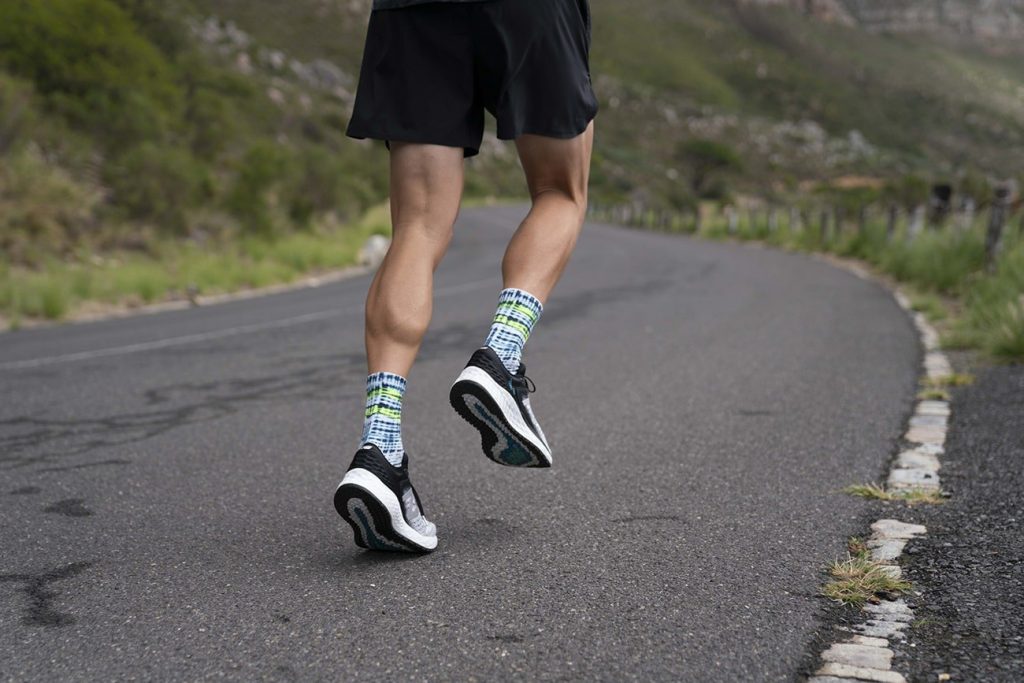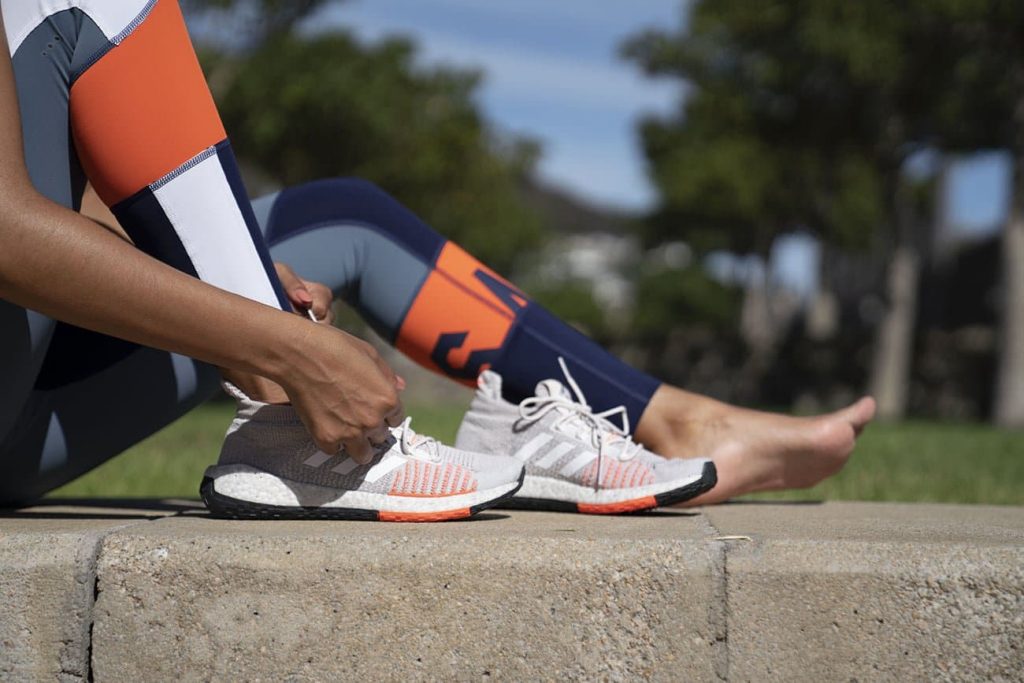How To Deal With Ankle Pain While Running
Step one: Stop running. Step two: Get to the root of the issue.
It usually goes something like this: You take some time off of running, or maybe you are just getting started for the first time, and you decide to get back out there. You’re motivated, and your intentions are good, so you pledge to get out there every day. First, you walk a little. Then you walk-run. Then you’re full-on running! You’re feeling great. You’re optimistic. And boom – you start feeling pain in your ankles.
Experiencing ankle pain when running is common, but it’s not always enough to stop a determined runner in their tracks. There can be many causes of ankle pain, so it’s important to understand what is causing the pain and when it is enough to warrant a pause or modification to your running routine.
Common Causes of Ankle Pain
Your ankles form the connection between your body and the ground. You may never have thought of it this way, but running is technically a one-legged sport; you need both your legs to run, but with each stride of the gait cycle, you leap and land on one leg at a time, loading the foot and ankle with your entire body weight as well as the added force of gravity.
RELATED: Boost Your VO2 Max & Get Faster!
What’s happening in your foot and ankle with each step can affect your entire body. While much of your single-leg stability comes from the hip – in particular, the gluteus medius muscle – weakness anywhere up and down the kinetic chain (above or below the hip) can cause instability and vulnerability at the ankle. Running causes you to repetitively load your joints. If there is a problem with your gait mechanics, chances are you’re going to feel it during or after a run.
Common Symptoms of Ankle Pain
Ankle pain can come in many different forms, but first let’s do a quick refresher on the anatomy of your ankles.
The ankle joint is made up of the tibia, which forms the inner ankle bone (medial malleolus), the fibula, which forms the outer ankle bone (lateral malleolus), and the talus, an irregularly shaped bone between the two that helps form a “mortise and tenon” joint that allows you to rotate your foot up, down and side to side.
This ankle joint that is formed is called the talocrural joint, and it is critical that it is both mobile and stabile for a healthy ankle. Muscles, tendons and ligaments help to reinforce stability and create power and movement through the joint. When it’s hypomobile or stiff, you might feel tightness in your achilles or calf muscles, or even pain at the front or sides of your ankle. If you overpronate and your midfoot arch collapses with each step of the gait cycle you might feel sharp pain or a constant ache along either side of your ankle due to repetitive straining of the peroneals or posterior tibialis muscle.
Most ankle injuries are either a repetitive-use injury such as a tendinopathy caused by repeatedly loading the joint with bad body mechanics or footwear, or they can be a more acute injury such as an ankle sprain caused by rolling the ankle, usually inward, leading to partially or fully torn ligaments.
RELATED: Strong Ankles Can Keep You From Slowing Down
You’ll come to realise that the ankle is actually pretty amazing. It is both capable of adapting to uneven surfaces by having a certain amount of mobility in the joints, but it is also good at stabilising – activating multiple muscles around the joint to help prevent movement when you need a sturdy support over which to pivot. Muscles in and around the ankle help it move and store energy to propel your body forward when you run. When you increase your speed, the forces on the ankle joint increase, making it more vulnerable to injury.

Treatment for Ankle Pain
If you have ankle pain and you’re not sure what it means, it’s always good to seek medical care from an orthopedist or doctor of physical therapy, both of whom can assess and diagnose your injury for the proper treatment plan. As a general rule, if your pain has developed gradually, you may have an overuse injury best addressed with rest, ice and modification to your exercise routine.
As a Doctor of Physical Therapy, my concern is always “why?” Why did you develop pain? What deficits in mobility or strength led to the overuse injury? For each person it can be different, but usually “overuse” injuries are the result of too much too soon, or dormant weakness that only comes out when the joint is put through more stress.
RELATED: How To Get Your Mileage To The Double Digits
Maybe you have increased your mileage or frequency of running suddenly and your body was not prepared for the increased workload. Maybe your body didn’t have a chance to recover between workouts. Maybe you’re not strengthening other important muscles such as the glutes and the core for improved gait mechanics. Maybe your sneakers are not the right fit for your gait mechanics. Whatever the cause, it’s important to temporarily reduced the stress on your joints and allow your body to heal. If your pain persists more than three days or limits your tolerance of returning to running after a week of rest, it’s best to see a medical practitioner for more specific guidance.
If you develop swelling, sharp pain with weight bearing, or any type of throbbing constant pain that does not reduce with rest, ice, and elevation and is either getting worse or limiting your tolerance of daily activities such as walking or going up or down stairs, then you might have a more serious injury. But don’t freak out! There is likely a solid treatment plan. Make sure you get the care you need by seeing a physical therapist who can guide you through the healing process and get you back on your feet as soon as possible.

Ankle pain is a bummer, and no runner wants to hit pause on their workout plan. But sometimes it is necessary to take a break for long-term success. The best thing you can do to prevent injury is to pay attention to your body, and build a well rounded exercise routine. No runner should just run – make sure you’re incorporating a good exercise regimen complete with stretching, soft tissue release, and a whole lot of strengthening for the legs, hips, ankles and core.
RELATED: 7 Moves To Fire Up Your Core Before Your Next Run!
If you have “wobbly” ankles or a tendency to roll your ankles, you are more likely to twist an ankle while running. Be proactive by strengthening your ankles with heel raises, single-leg balance exercises, and hip strengthening so that your body has the built in strength and stability to reduce the load on your ankles and improve your overall form and endurance of running.
READ MORE ON: ankle pain ankles injury-prevention

